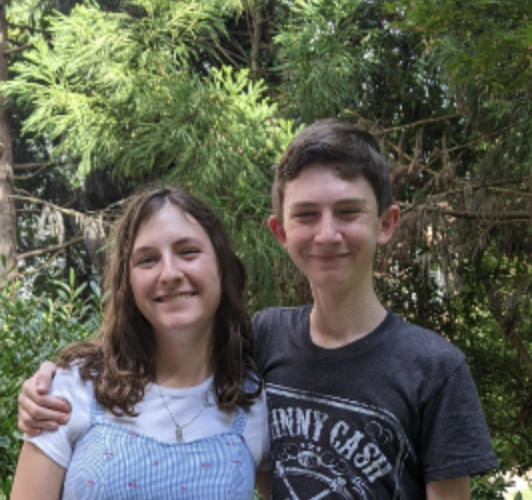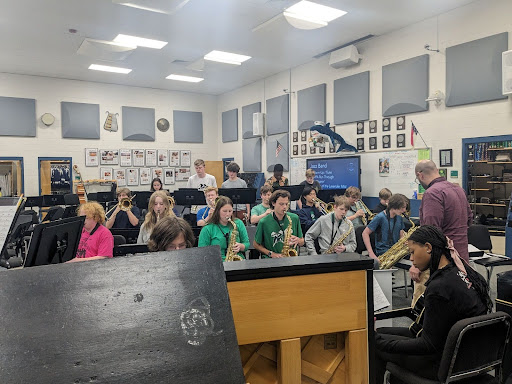Aidan Quinn, the first chair in both Symphonic band and Jazz band, had a trombone solo in “Moanin”.
Many people at Leesville have heard of MPAs in band, but most people don’t know what they mean in Jazz band.
“For Jazz MPA, first of all, there’s a regulation where instead of any categories or grades, you just pick three pieces of music that are stylistically different from each other. So we picked ‘Moanin’’ by Mingus, ‘Lady of the Lavender Mist’ by Ellington and ‘Symphony in Riffs’ by Benny Carter,” said Quinn.
“Moanin” is a very frantic piece, and it’s meant to feel frantic. It’s a bunch of conflicting melodies put together, and it comes together into one big whole. It’s a really awesome piece,” said Quinn.
“Moanin” has more of the scattered jazz feel that you see in later forms of Jazz.
“Lady of the Lavender Mist” is our laid-back, smooth, slow jazz piece. It has a lot of triplet patterns and a lot of holding back the beat. It’s kinda meant to evoke the feeling of lovesickness. The “Lady of the Lavender Mist ” is sort of eluding the “voice” of the piece,” said Quinn.
Aidan, one of the best trombonists in Jazz Band and this year to get a Solo. “In my solo, supposedly I’m supposed to be like the priest who’s marrying them. In symphony in riffs, I’d say if you think of ‘jazz’ something like ‘Symphony in Riffs’ would come to mind, it’s just kind of standard jazz,” said Quinn.
While the music in Jazz band may be very different from Concert band or intermediate band, the ways they work and pick music are still very similar.
Mr. Cvijanovic, the Conductor of Jazz band, said, “I approach choosing pieces for jazz very much in the same way I do for concert band, or for orchestra, etc., is I try to find pieces that meet the students where they are technically, but also will help push them in the direction that I want them to go. So if there are certain things that we do well, but certain things that we don’t do well yet. I try to find a piece that can maximize both of those different ends of the spectrum so that we can continue growing and moving forward, but still at the same time celebrate the things that we’re doing well.”
Cvijanovic also takes into account what the audience might be interested in: “[I pick pieces that make the] audience members feel represented by the composers and by the subject matter of the pieces. Also, I try to pick things that I know the students will enjoy playing and that people will enjoy listening to. Sometimes I care about that a little bit less than the pedagogical side of things.”

Hi am Ben, I am a Staff writer here at the Mycenaean. I am also a curler and a part of Model UN.

Leave a Reply